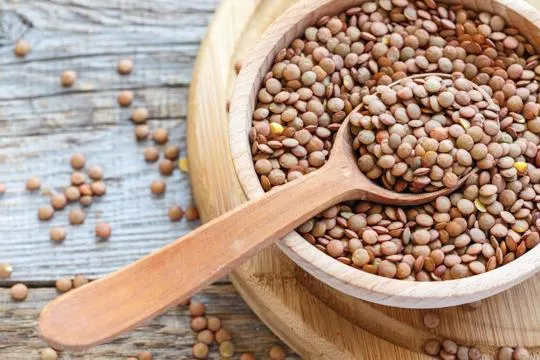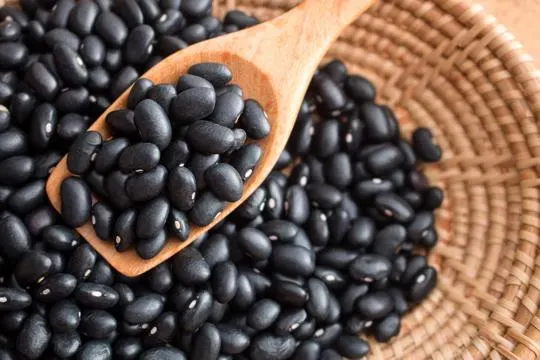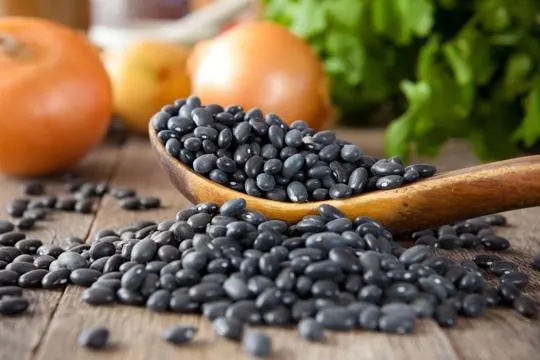Summary of key points
The primary difference between lentils and black beans centers on cooking time, texture, and nutritional content. Lentils cook more quickly and offer an earthy flavor, while black beans have a creamier texture and a sweet taste. Both are rich in protein and fiber but differ slightly in their micronutrient profiles.
Ever find yourself standing in the grocery aisle, lentils in one hand, black beans in the other, utterly baffled?
It’s like choosing between two blockbuster movies.
Both options promising, yet so different. We’ve all been there. The internal debate is real.
Lentils, with their earthy flavor, have graced our soups and salads for years. On chilly nights, they’ve been our warm hug.
Black beans? They’re the rock stars of taco night. That rich, satisfying texture has saved many a dinner.
Here’s the scoop. We’re breaking it down. No jargon, just facts.
It’s a face-off, folks. Lentils vs. Black Beans. What sets them apart is more than just color and shape.
We’re here to share. Gather ’round for the ultimate showdown.
What are Lentils?

Lentils, a small legume native to Asia and the Mediterranean region, have been cultivated for thousands of years.
Varieties come in green, brown, black, and red.
They are known for their high nutritional value and have become a dietary staple around the globe.
Versatility is key with lentils.
Cook them as a side dish, use them in soups or stews, or even as a meat substitute in vegetarian dishes.
Their earthy flavor and tender texture make them popular amongst health-conscious eaters.
Plus, they cook up quickly – in as little as 20 minutes.
Lentils are packed with essential nutrients like fiber, vitamins, and minerals.
They are especially rich in iron, which helps maintain healthy blood cells.
Other minerals include folate, magnesium, potassium, and zinc.
Studies suggest that including lentils in your diet may help lower cholesterol and reduce the risk of heart disease.
The high fiber content aids digestion and promotes gut health.
Plus, antioxidants found in lentils have been linked to reducing inflammation and protecting against certain types of cancer.
So why not explore the world of lentil recipes? From side dishes to soups, lentils can transform your meals in no time.
What are Black Beans?

Black beans, also known as black turtle beans, are a type of legume that comes from Central and South America.
They have a deep black color and a delicious taste.
This makes them popular all around the world.
Fiber, protein, folate, iron, and magnesium are all found in these beans.
Plus, they are low in fat and free from cholesterol.
This makes them good for people who want to stay healthy.
Black beans can take on the flavors of whatever they are added to.
So, they are great to use in soups, stews, salads, and desserts like brownies.
Mashing them is also a common way to use them in traditional Latin American dishes like refried beans.
Differences Between Lentils and Black Beans

Lentils and black beans are two distinct legumes.
1 – Origin and Cultivation
Lentils and black beans – two popular legumes – have both fascinating origins and distinct cultivation practices.
Lentils are believed to have come from the Near East and were cultivated there 8,000 years ago.
Meanwhile, black beans have their roots in Central and South America, stretching back over 7,000 years.
Lentils have evolved across different regions and can now be found in various parts of the world.
They prefer cooler temperate climates, so countries like Canada, India, Turkey, and Australia are all suitable for cultivation.
Unlike lentils, which can be grown as winter or summer crops depending on region, black beans are better suited to warmer tropical or subtropical climates.
These legumes are also different in their cultivation practices.
Lentils are usually sown directly into the soil whereas black beans are planted as seedlings.
Moreover, while lentils need rainfall for irrigation, black beans can tolerate drier conditions due to their nitrogen-fixing ability.
2 – Appearance and Size
Lentils & black beans have notable differences in terms of appearance & size.
Lentils are small & round or oval-shaped, & vary in colors such as green, brown, red, black & yellow.
By contrast, black beans are larger & kidney-shaped, with a dark black color.
Texture also differs between the two.
Lentils have a softer texture, which becomes creamy when cooked.
Thus, they are great for soups & stews.
Black beans, on the other hand, remain firmer even after cooking.
This enables them to retain their shape in dishes like salads & burritos.
Taste profiles also differ.
Lentils have an earthy flavor, which pairs well with various spices & ingredients.
Black beans have a nutty flavor with a hint of sweetness.
Both lentils & black beans are nutritious & versatile in cooking.
Their appearance, size, texture & taste set them apart.
Which one you prefer is subjective & based on personal preference & culinary needs.
3 – Taste and Flavor
Taste and flavor of lentils and black beans? It’s up to you.
Lentils offer a mild, earthy flavor that works with spices.
Black beans have a sweeter, creamier taste.
Both legumes provide a yummy taste for your recipes.
Experiment to find which one is perfect for you.
Plus, texture-wise, lentils are softer when cooked, while black beans are firmer.
Your choice between lentils and black beans? It’s all about the flavors you want in your meals.
No wrong decision here.
4 – Cooking Time and Preparation
Cooking time is key when comparing lentils and black beans.
Lentils are speedy, taking around 20 minutes to cook.
Black beans take longer, 1-2 hours on the stove.
Both types need soaking before cooking.
Lentils only need 1-2 hours, but black beans need 4 hours or overnight.
Soaking and cooking properly bring out the flavours and nutrition of both lentils and black beans.
This makes them great for many dishes.
5 – Nutritional Profile
Lentils and black beans may look similar, but their nutrition is different.
Both offer protein, fiber, and vitamins and minerals.
Lentils are high in protein, ideal for vegetarians or those cutting down on meat.
Plus, they give dietary fiber for digestion and gut health, iron for blood cells, and folate for cell division.
Black beans provide their own unique set of nutrition.
They have protein, fiber, folate, and iron.
Additionally, they have antioxidants to protect the body from free radicals and reduce inflammation.
Plus, they contain anthocyanins for heart health.
Similarities Between Lentils and Black Beans

Lentils and black beans have much in common.
Both are legumes, full of protein and fiber and low in fat.
Plus, they have essential minerals, like iron, potassium, and folate.
They are affordable and simple to find, making them popular food choices.
Taste and texture differ, though.
Lentils have a mild flavor, great for adding various herbs and spices.
Black beans have a sweeter taste and firmer texture, great for dishes like rice and beans.
When it comes to cooking time, lentils cook fast, in 20-30 minutes.
Black beans take more time to soften, about 1-2 hours.
Despite the differences, lentils and black beans alike can contribute to a healthy diet.
Use either for soups, salads, and main dishes – and enjoy the nutritional benefits.
Culinary Uses and Recipes with Lentils and Black Beans
Lentils and black beans are two tasty legumes with many uses.
In Indian cuisine, lentils are popular in dals, curries, soups, salads, and stews.
Lentils come in various colours such as green, red, brown, and black.
Black beans are a staple in Latin American dishes, like rice and beans and refried beans.
They have an earthy flavour that works great with spices like cumin and chili powder.
Both lentils and black beans make a great meat substitute in vegetarian and vegan meals.
They’re packed with protein, fiber, vitamins, and minerals.
Plus, they’re very affordable and easy to find.
When it comes to cooking, lentils are faster than black beans.
Green or brown lentils take 20-30 minutes to cook.
Black beans need to be soaked overnight and then simmered for 1-2 hours.
Nutritionally, lentils and black beans are a great choice.
They’re low in fat but high in protein and fiber.
Plus, they have iron, folate, magnesium, and potassium.
Conclusion
Overall, we can see that while both Black Beans and Lentils are highly nutritious legumes packed with protein and fiber, they have several key differences.
Lentils take less time to cook, but black beans provide more potassium and fewer calories.
Black Beans also have a softer texture and stronger flavor than Lentils do.
The choice between the two depends on individual preference and dietary needs as they can be used interchangeably in recipes.
Whenever choosing between these two particular types of legumes, everyone should consider all of the nutritional information provided as well as their own specific taste preferences.
In doing this, Lentils or Black Beans can be used effectively when it comes to adding extra nutrition to your meals in an enjoyable way.

Leave a comment